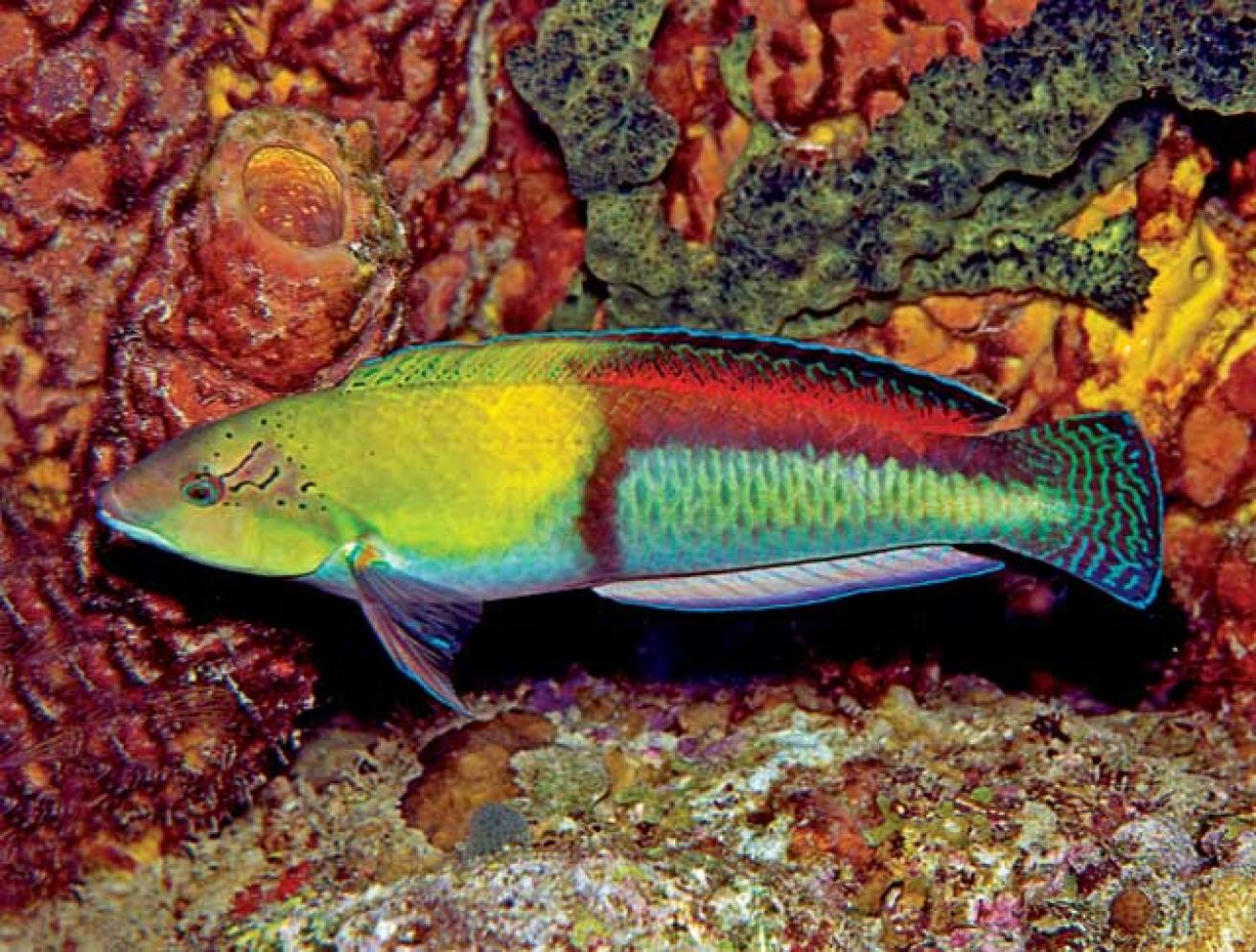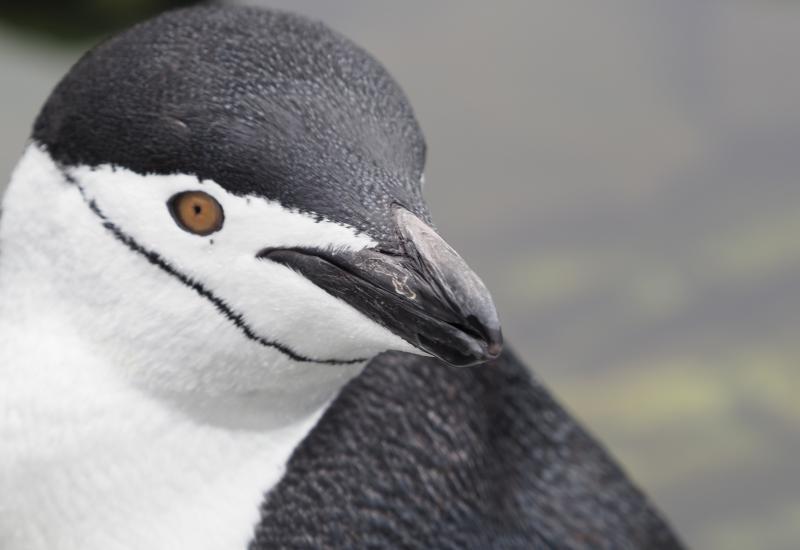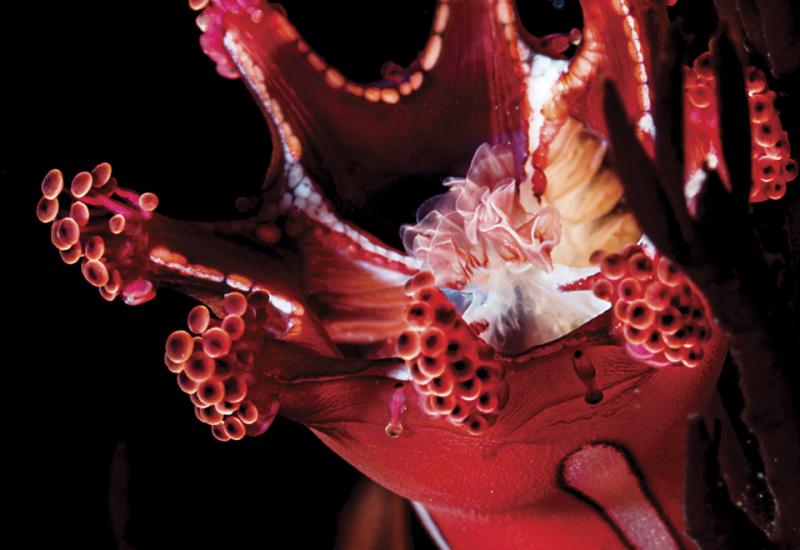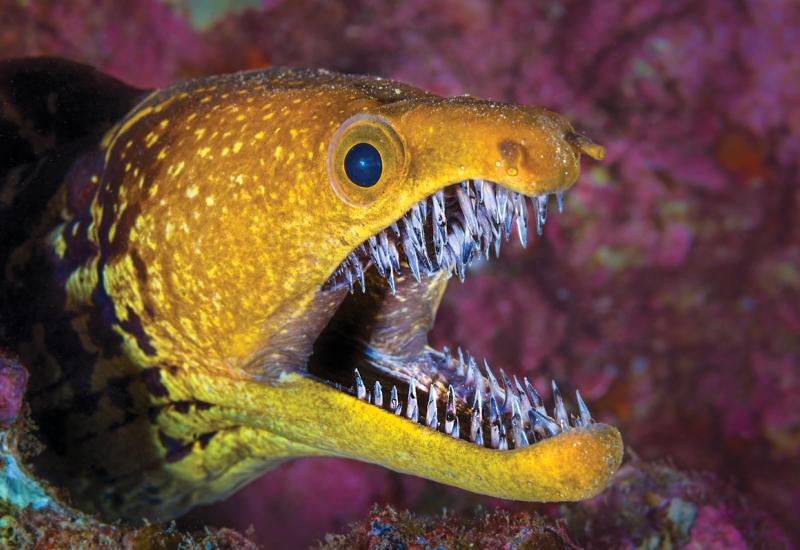Critter Hunt: Redback Wrasse On Parade

Redback Wrasse
Ned and Anna DeLoach
As if yellowhead wrasse weren’t gaudy enough, there’s now an even jazzier version swimming around the Caribbean.
Until very recently, a color variation of the wrasse known as “redback” was thought to be confined solely to the waters of the mid-Atlantic island of Bermuda, where the novel color scheme has replaced the male yellowheads’ traditional wardrobe.
When Anna and I saw our first redback in Bermuda a few years ago, its striking colors stopped us in our tracks. The classic yellow head and greenish body associated with redbacks remained, however the conventional black along the fish’s back and midbody had changed to a deep red, and an exquisite splash of turquoise accentuated the lower jaw and breast.
Because the color pattern of the Bermuda specimens varied only in the males — and all the other diagnostic characteristics remain the same as the Caribbean’s yellowhead population —it was determined by researchers that redbacks were not a separate species.
This summer, while participating in a REEF fish population survey in the Bay Islands of Honduras, a scientist mentioned in an email addressed to Anna that redbacks had been recently sighted in the area. Both of us were intrigued, but the message arrived on the next-to-last day of our stay. This left us very little opportunity to mount a search.
A few months later in Bonaire, Anna came swimming up to me with a single word — redback — scrawled across her slate. I followed her down to 80 feet, where she pointed out a redback cruising the coral slope hundreds of miles from Bermuda.

Ned and Anna DeLoach
As if yellowhead wrasse weren’t gaudy enough, there’s now an even jazzier version swimming around the Caribbean.
Until very recently, a color variation of the wrasse known as “redback” was thought to be confined solely to the waters of the mid-Atlantic island of Bermuda, where the novel color scheme has replaced the male yellowheads’ traditional wardrobe.
When Anna and I saw our first redback in Bermuda a few years ago, its striking colors stopped us in our tracks. The classic yellow head and greenish body associated with redbacks remained, however the conventional black along the fish’s back and midbody had changed to a deep red, and an exquisite splash of turquoise accentuated the lower jaw and breast.
Because the color pattern of the Bermuda specimens varied only in the males — and all the other diagnostic characteristics remain the same as the Caribbean’s yellowhead population —it was determined by researchers that redbacks were not a separate species.
This summer, while participating in a REEF fish population survey in the Bay Islands of Honduras, a scientist mentioned in an email addressed to Anna that redbacks had been recently sighted in the area. Both of us were intrigued, but the message arrived on the next-to-last day of our stay. This left us very little opportunity to mount a search.
A few months later in Bonaire, Anna came swimming up to me with a single word — redback — scrawled across her slate. I followed her down to 80 feet, where she pointed out a redback cruising the coral slope hundreds of miles from Bermuda.










